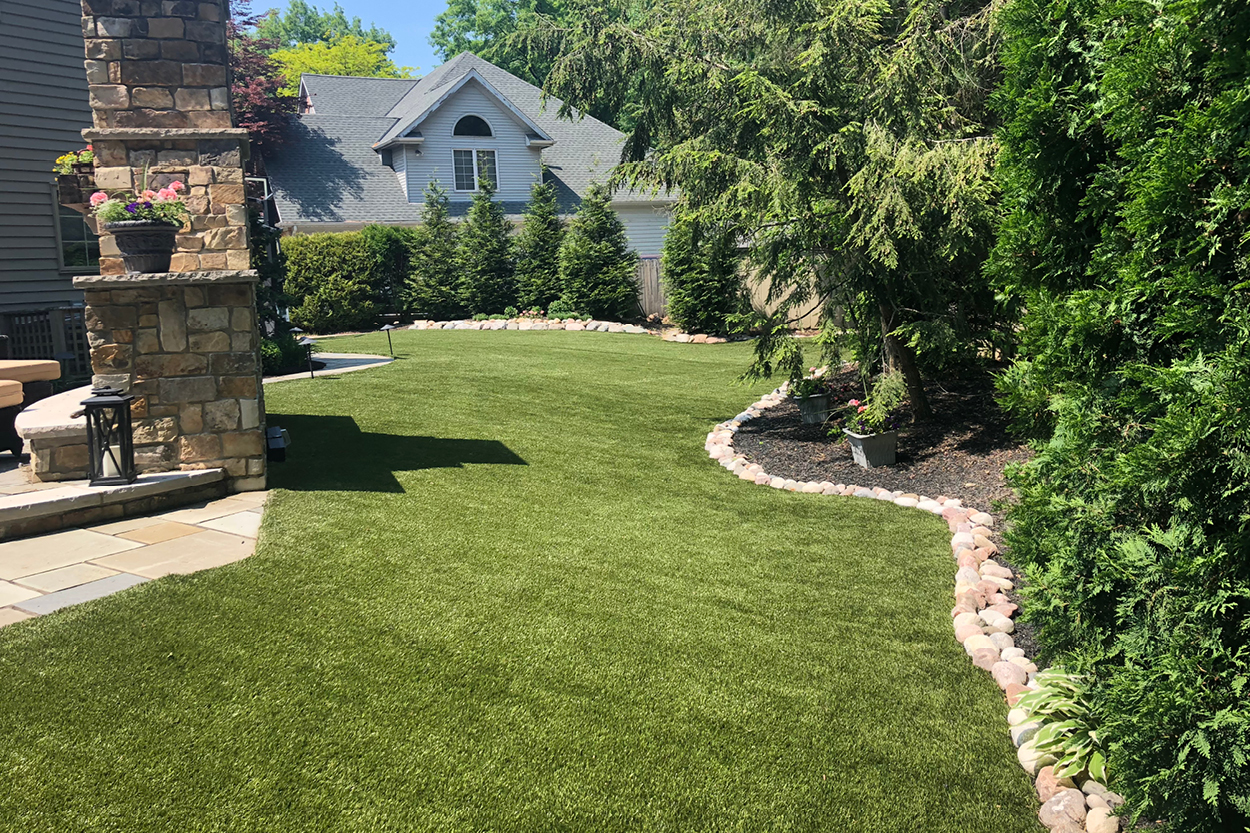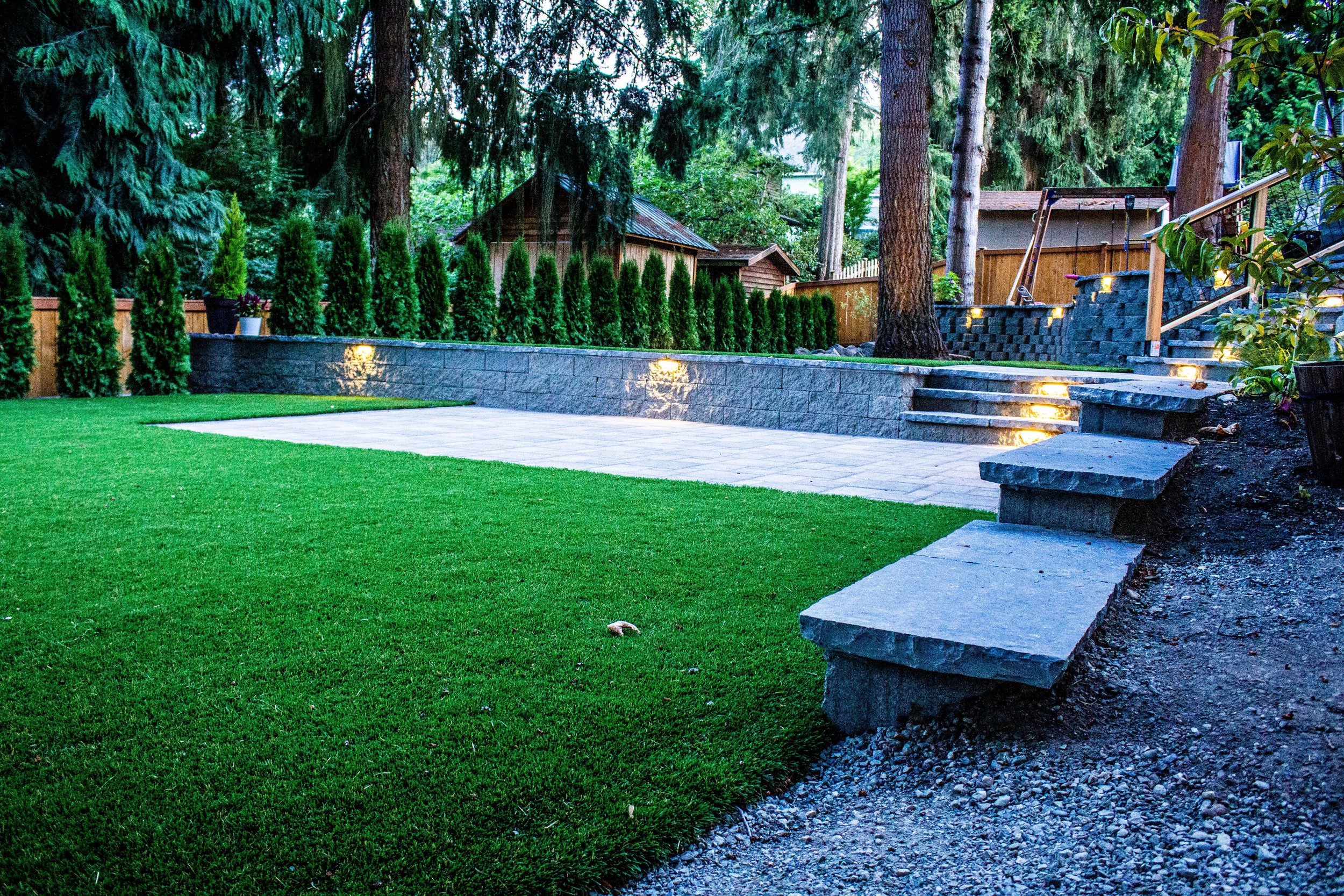Experience a Ideal Lawn with Arizona Artificial Turf for Any Outdoor Space
Experience a Ideal Lawn with Arizona Artificial Turf for Any Outdoor Space
Blog Article
Delve Into the Environmental Benefits of Opting for Artificial Turf Solutions
The adoption of synthetic turf options offers a compelling possibility to resolve pressing environmental challenges. By considerably lowering water usage and lessening the application of hazardous chemicals, these alternatives not only advertise sustainable landscape design however additionally safeguard local environments.
Water Preservation Conveniences
Among the most significant benefits of synthetic grass is its capability to save water. Traditional lawn yards call for considerable irrigation, specifically in locations vulnerable to dry spell or water limitations. On the other hand, synthetic grass does not need watering, substantially decreasing the total need for water resources. This function is particularly beneficial in arid areas where water shortage is a pressing issue.
By getting rid of the demand for routine watering, synthetic grass contributes to lasting landscape techniques and aids alleviate the environmental influence of excessive water usage. In addition, the conservation of water expands to the reduction of runoff, which can result in soil erosion and waterway contamination.
Furthermore, the setup of synthetic grass enables homeowners and municipalities to assign water resources much more effectively, concentrating on necessary usages such as drinking water and agriculture. The shift in the direction of synthetic grass not just advertises liable water use however also aligns with more comprehensive environmental goals intended at maintaining natural deposits.
As neighborhoods significantly prioritize sustainability, the water conservation benefits of synthetic grass present a compelling situation for its fostering in commercial and property landscaping jobs.
Minimized Chemical Use
The transition to synthetic turf considerably reduces the dependence on chemical therapies typically used in natural yard maintenance. Standard lawn management typically entails the application of plant foods, herbicides, and pesticides to promote growth and control parasites. These chemicals can pose threats to human wellness, regional wildlife, and the setting, adding to dirt and water contamination.
On the other hand, fabricated lawn removes the need for these harmful materials. As soon as mounted, it calls for marginal upkeep, mainly containing routine cleansing and occasional infill replenishment. This decrease in chemical usage not just profits the prompt setting yet additionally adds to broader ecological stability. By minimizing the launch of synthetic substances into the community, synthetic grass advertises much healthier dirt and water systems.
In addition, the lack of chemical drainage connected with synthetic grass installations helps protect local rivers from pollution, supporting aquatic life and keeping biodiversity. Turf installation phoenix az. As communities progressively focus on sustainable practices, choosing for synthetic lawn offers a feasible remedy that straightens with environmental preservation goals. Through this change, residential or commercial property owners can delight in rich eco-friendly rooms without jeopardizing ecological health, leading the way for an extra lasting future
Reduced Carbon Impact

In addition, the installation of man-made lawn can result in substantial water conservation. Natural yards need significant quantities of water for irrigation, which not just includes in the carbon impact related to water extraction and treatment but likewise strains regional water sources. On the other hand, synthetic grass requires very little upkeep, needing no watering, consequently substantially lowering water use and its associated energy prices.
Furthermore, the durability of synthetic grass contributes to its lower carbon influence. With a life-span of approximately 15 years or even more, the demand for constant replacements is diminished, leading to less waste and lower power intake in production and dealing with typical turf alternatives. On the whole, synthetic grass provides a lasting choice for ecologically aware landscaping.
Habitat Preservation
Habitat conservation is an important factor to consider in the debate over landscape design selections, especially when contrasting synthetic grass to all-natural lawn. All-natural lawn lawns often require comprehensive upkeep, including the usage of herbicides, fertilizers, and pesticides, which can detrimentally impact regional environments. These chemicals can leach into the soil and waterways, hurting indigenous plants and animals and interfering with local habitats.
Synthetic lawn gets rid of the requirement for dangerous chemicals, consequently safeguarding neighboring wild animals and preserving the stability of surrounding ecological communities. The installment of fabricated lawn can lead to the conversion of former turf areas right into more biodiverse landscapes, such as pollinator yards or indigenous plant locations, which can sustain neighborhood wild animals.
Ultimately, the shift to synthetic grass not just saves water and minimizes maintenance efforts yet likewise fosters a more unified relationship in between human tasks and the native environment, advertising environment preservation at the same time.
Long-Term Sustainability
Lasting sustainability is an important element in assessing the benefits of synthetic grass over conventional grass yards. One of one of the most significant benefits of fabricated grass is its sturdiness; it can last read what he said as much as 15-20 years with marginal upkeep, whereas all-natural grass needs frequent reseeding and replacement. This durability minimizes the requirement for constant resources, such as water, fertilizers, and pesticides, which are important for preserving a healthy and balanced yard yard.
Furthermore, man-made turf adds to a reduction in carbon discharges related to yard treatment equipment. Conventional grass typically call for gas-powered lawn mowers, leaners, and blowers, all of which add to air contamination. Phoenix turf companies. In comparison, synthetic grass removes the requirement for such tools, promoting a cleaner setting
Additionally, the production of artificial turf increasingly utilizes recycled products, improving its sustainability profile. As makers embrace environmentally friendly methods, the environmental footprint of man-made grass remains to diminish.

Verdict
The fostering of man-made lawn solutions presents substantial ecological advantages, including substantial water preservation, lowered dependence on unsafe chemicals, and a lower carbon impact. Moreover, synthetic grass aids in preserving all-natural habitats by decreasing land disruption and advertising long-lasting sustainability through using sturdy products. Jointly, these elements emphasize the capacity of synthetic grass to contribute favorably to ecological health and wellness and use a sensible alternative to standard landscape design techniques in an increasingly resource-conscious world.
In contrast, synthetic grass other does not require watering, dramatically lowering the overall need for water sources. By decreasing the release of synthetic compounds right into the environment, man-made turf promotes much healthier soil and water systems.
Moreover, the setup of man-made lawn can result in substantial water conservation. In contrast, artificial lawn needs very little maintenance, needing no watering, thereby significantly reducing water use and its linked power prices.

Report this page